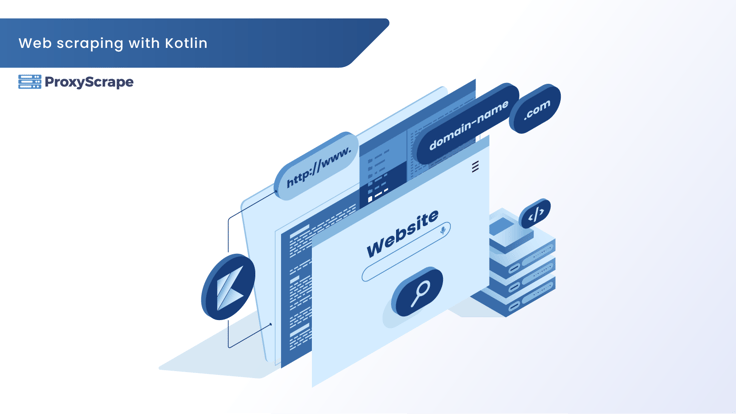
In today's data-driven world, information is power. Those who can efficiently gather and analyze data hold a distinct advantage. Web scraping has quickly become an essential tool for developers and data analysts looking to extract valuable information from websites. But why choose Kotlin for this task? Kotlin, a modern programming language, offers a fresh perspective and powerful tools for web scraping, making it simpler and more efficient.
The Rise of Web Scraping
Web scraping is the technique used to extract data from websites, transforming unstructured content into structured data. This process is crucial for applications in market research, competitor analysis, price monitoring, and much more. By automating the collection of vast amounts of data, businesses and researchers can save countless hours and focus on drawing insights from the information gathered.
Why Kotlin Stands Out
Kotlin has been steadily gaining popularity since it was introduced, especially after Google endorsed it as an official language for Android development. But the appeal of Kotlin isn't just limited to mobile apps. Its concise syntax, compatibility with Java, and modern language features make it a potential option for web scraping too.
Setting Up Kotlin for Web Scraping
Before you can start scraping, you'll need to set up your development environment for Kotlin. This involves installing necessary libraries such as Ktor and Jsoup. These libraries offer the tools to make HTTP requests and parse HTML content. Here's how you can set them up:
To include the required dependencies in your project, add the following to your build.gradle.kts file:
dependencies {
// Ktor client
implementation("io.ktor:ktor-client-core:2.0.0")
implementation("io.ktor:ktor-client-cio:2.0.0") // CIO engine
// Jsoup
implementation("org.jsoup:jsoup:1.15.3")
}
Once your environment is set up, you can use the following Kotlin code to scrape data from the Books to Scrape website:
import io.ktor.client.*
import io.ktor.client.engine.cio.*
import io.ktor.client.request.*
import org.jsoup.Jsoup
suspend fun main() {
// Initialize the Ktor HTTP client with the CIO engine
val client = HttpClient(CIO)
try {
// Fetch the HTML content from the books.toscrape.com main page
val url = "https://books.toscrape.com/"
val htmlContent: String = client.get(url)
// Parse the HTML content using Jsoup
val document = Jsoup.parse(htmlContent)
// Extract the titles of books (they are inside <h3> tags with <a> inside)
val bookTitles = document.select(".product_pod h3 a")
// Print the extracted titles
bookTitles.forEach { book ->
println(book.attr("title")) // Book titles are in the 'title' attribute of <a>
}
} catch (e: Exception) {
println("Error during scraping: ${e.message}")
} finally {
// Close the Ktor client
client.close()
}
}
This script fetches HTML content using Ktor and parses it with Jsoup to extract book titles. By running it, you can see how simple yet powerful web scraping can be with Kotlin.
Optimizing Web Scraping Projects
Efficiency and performance are critical when scraping the web, especially at scale. Here are some tips to optimize your web scraping projects:
Use Efficient Parsing Techniques:
Opt for libraries that are both fast and lightweight. Jsoup, for instance, is a great tool for parsing HTML due to its simplicity and speed. By selecting elements directly, you reduce processing time and improve overall performance.
Implement Error Handling:
Websites change over time, which can lead to broken scrapers. Use try-catch blocks in your code to handle unexpected errors gracefully. Logging errors and monitoring your scraping scripts can help you react quickly to changes.
Rate Limiting and Respectful Scraping:
Avoid overwhelming servers with requests by implementing rate limiting. Introduce delays between requests and adhere to a site's `robots.txt` file to respect their terms of use. This not only prevents IP bans but also promotes ethical scraping practices.
Conclusion
Web scraping with Kotlin offers a blend of power and simplicity, enabling developers to efficiently gather and leverage data. With Kotlin's modern features and seamless Java integration, developers can craft robust scraping tools that meet today's data demands.
If you're interested in exploring more, consider checking out ProxyScrape for additional proxy options in your web scraping endeavors. For further information on setting up Jsoup, visit Jsoup, and for exploring Ktor’s capabilities, head over to Ktor.